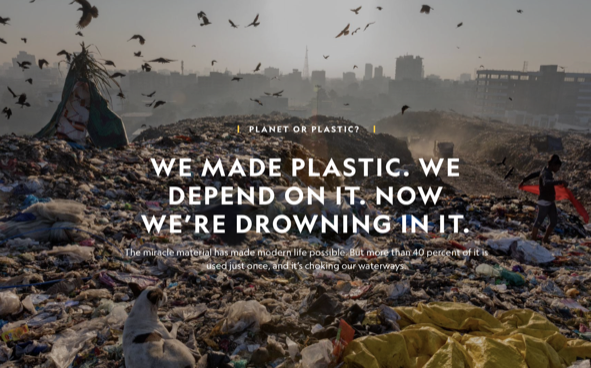1) Where do we use the most plastic?
By far the most plastic in Germany is used for packaging. This accounts for 33 per cent of total consumption, ahead of the construction industry and electronic devices. This is reported by the Bund für Umwelt und Naturschutz Deutschland (BUND) in its brochure "Achtung Plastik! Chemicals in plastic". Many things are now packaged in plastic. Whether it's the cucumber in the supermarket, the new shirt from the internet or the medication from the pharmacy.
2) How much plastic do we use?
According to the Federal Environment Agency, around 18.7 million tonnes of packaging waste are consumed in Germany every year. Around 17 per cent of this consists of plastic. Half of this is recycled. The other half is incinerated or sent to third countries.
3) How many coffee cups end up in plastic waste?
In Germany, around 2.8 billion coffee-to-go cups end up in the rubbish bin every year. That's around 7.6 million per day, 320,000 per hour and just under 34 disposable cups per person per year. This is according to calculations by Deutsche Umwelthilfe. Not only do the cups pollute rubbish bins and streets, but the resources used to make them could also be better utilised. This is because a lot of wood, water and energy is needed to produce them. According to Deutsche Umwelthilfe, the energy used annually for the production of coffee cups could supply a small town with energy.
4) What effects does plastic have on humans?
Many chemicals used in the production of plastics are toxic and harmful to health, as reported by BUND. The additives are particularly dangerous: they are not firmly bound in the plastic and can escape over time. These additives contain substances that interfere with the hormone system. And this can have an impact on health. Consumers should pay attention to the information on a product. Rolf Buschmann, plastics expert at BUND, emphasises this: "It is often not the plastic itself that is harmful, but the additives and plasticisers it contains." In his opinion, however, food packaging in Germany is relatively safe.
5) Which plastic products will be banned?
The European Union has decided to ban certain single-use plastic products. This only affects products that are easily replaceable and make up over 70 per cent of the plastic floating in the sea. These include cotton buds, plates, cutlery and plastic straws.
6) What about recycled plastic?
Philipp Sommer from Deutsche Umwelthilfe is in favour of recycled plastic. Consumers can orientate themselves by labels: Packaging that has a recycled content of at least 80 per cent is awarded the "Blue Angel". The German Nature and Biodiversity Conservation Union is in favour of recycling even more plastic and is calling for greater commitment to environmental protection. Further information on plastic recycling is also available on its website.
7) What about plastic alternatives such as bamboo?
Bamboo is often sold as an ecologically better alternative. However, according to the North Rhine-Westphalia consumer advice centre, bamboo is not the best choice. Although these reusable cups or lunch boxes are made from a renewable raw material, they are only partially so. In addition, plastics such as melamine resins are also used, which are harmful to health. If the crockery is heated to a high temperature, which happens when hot drinks are poured into a reusable cup, the plastics can dissolve and migrate into the food.
8) How can I dispose of plastic?
In Germany, there is a yellow bag for disposing of plastic. But not everything made of plastic belongs in it. Toothbrushes and ballpoint pens, for example, belong in the residual waste and large plastic products in the residual waste or the recycling centre.
You can throw all plastic packaging into the yellow bag. According to the waste disposal company Grüner Punkt, this includes film, plastic bags, shampoo bottles, coffee-to-go cups, tetra packs and pasta bags.
If you use organic plastic, you should find out in advance whether your municipal waste disposal company processes it as plastic or organic waste.
9) How can I save plastic?
There are many ways to use less plastic in everyday life. Use a cloth bag when shopping, for example. Using glass instead of plastic is also a good motto. Consumers can easily do without plastic when it comes to basic bathroom fittings.
You can also read a recent article in the Westfalenblatt.
This is just one of the reasons why we at Holst Porzellan are committed to beautiful and environmentally friendly porcelain!

 Source and origin of this article: Neue Westfälische 07.01.2020
Source and origin of this article: Neue Westfälische 07.01.2020